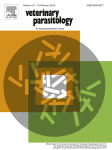View Item
- xmlui.general.dspace_homeCentros Regionales y EEAsCentro Regional Santa FeEEA RafaelaArtículos científicosxmlui.ArtifactBrowser.ItemViewer.trail
- DSpace Home
- Centros Regionales y EEAs
- Centro Regional Santa Fe
- EEA Rafaela
- Artículos científicos
- View Item
Relationship between pharmacokinetics of ivermectin (3.15%) and its efficacy to control the infestation with the tick Rhipicephalus (Boophilus) microplus in cattle
Abstract
This study aimed to determine the relationship between the variation in plasma concentration of ivermectin 3.15% over time and its efficacy against the cattle tick Rhipicephalus (Boophilus) microplus. In addition, a trial was conducted to infer if the application of successive treatments with ivermectin 3.15% could affect its accumulation in cattle. A noticeable variation of ivermectin plasma concentration was observed among the treated heifers. However,
[ver mas...]
This study aimed to determine the relationship between the variation in plasma concentration of ivermectin 3.15% over time and its efficacy against the cattle tick Rhipicephalus (Boophilus) microplus. In addition, a trial was conducted to infer if the application of successive treatments with ivermectin 3.15% could affect its accumulation in cattle. A noticeable variation of ivermectin plasma concentration was observed among the treated heifers. However, these differences did not have a significant effect onthe therapeutic efficacy of the treatment at the end of the trial. No significant differences were observed in the levels of tick infestations between heifers of the treated group; moreover, no significant correlation was detected between the plasma AUC0-21 of ivermectin 3.15% and the cumulative number of ticks of each heifer. Levels of therapeutic efficacy higher than 80% were observed only from day 7 post-treatment, when levels of ivermectin concentration were higher than 8 ng/ml. The lowest values of therapeutic efficacy were observed during the first and the second days post-treatment, when plasma concentrations of ivermectin 3.15% were lower than 8 ng/ml. Viable engorged females were collected from the heifers belonging to the treated group from days 1–5 post-treatment. There was a significant accumulation of the drug after the second dose of ivermectin 3.15%. Ivermectin concentrations in fat biopsies were 366 ng/g (51 days after the first treatment), 275 ng/g (51 days after the second treatment) and 15 ng/g (64 days after the second treatment). These results suggest that applications of successive treatments with ivermectin 3.15% might increase its accumulation in cattle tissues, extending the withdrawal period indicated for the commercial formulation.
[Cerrar]

Author
Nava, Santiago;
Rossner, Maria Victoria;
Ballent, Mariana;
Mangold, Atilio Jose;
Lanusse, Carlos Edmundo;
Lifschitz, Adrian Luis;
Fuente
Veterinary Parasitology 268 : 81-86 (April 2019)
Date
2019-04
Editorial
Elsevier
ISSN
0304-4017
Formato
pdf
Tipo de documento
artículo
Palabras Claves
Derechos de acceso
Restringido
 Excepto donde se diga explicitamente, este item se publica bajo la siguiente descripción: Creative Commons Attribution-NonCommercial-ShareAlike 2.5 Unported (CC BY-NC-SA 2.5)
Excepto donde se diga explicitamente, este item se publica bajo la siguiente descripción: Creative Commons Attribution-NonCommercial-ShareAlike 2.5 Unported (CC BY-NC-SA 2.5)

